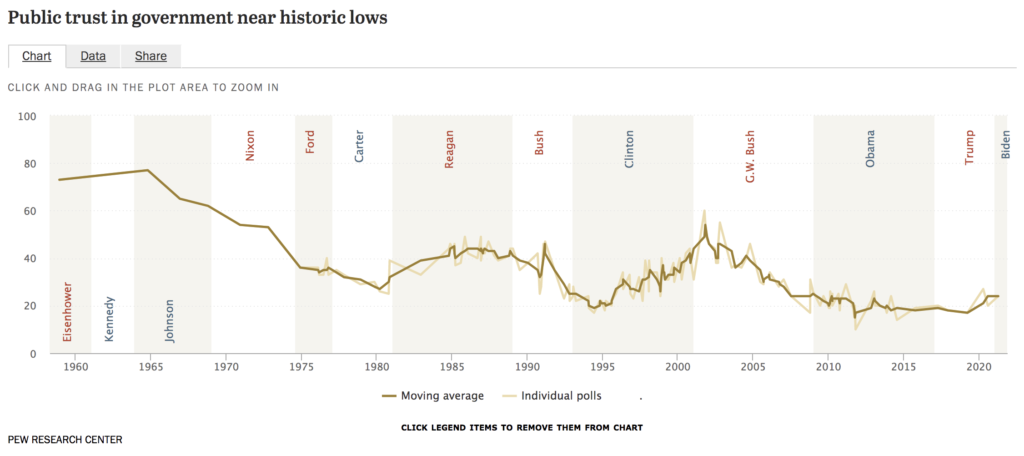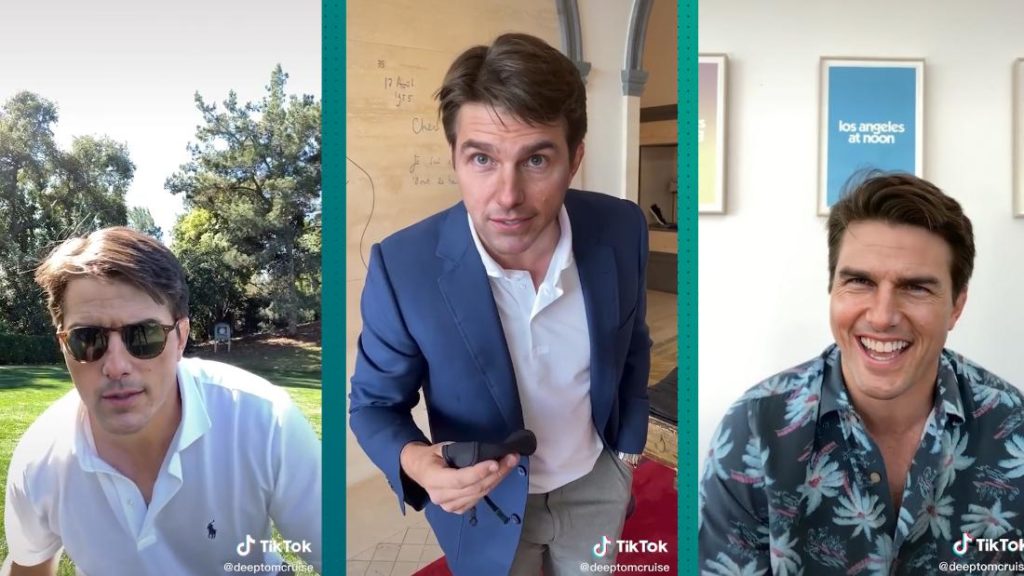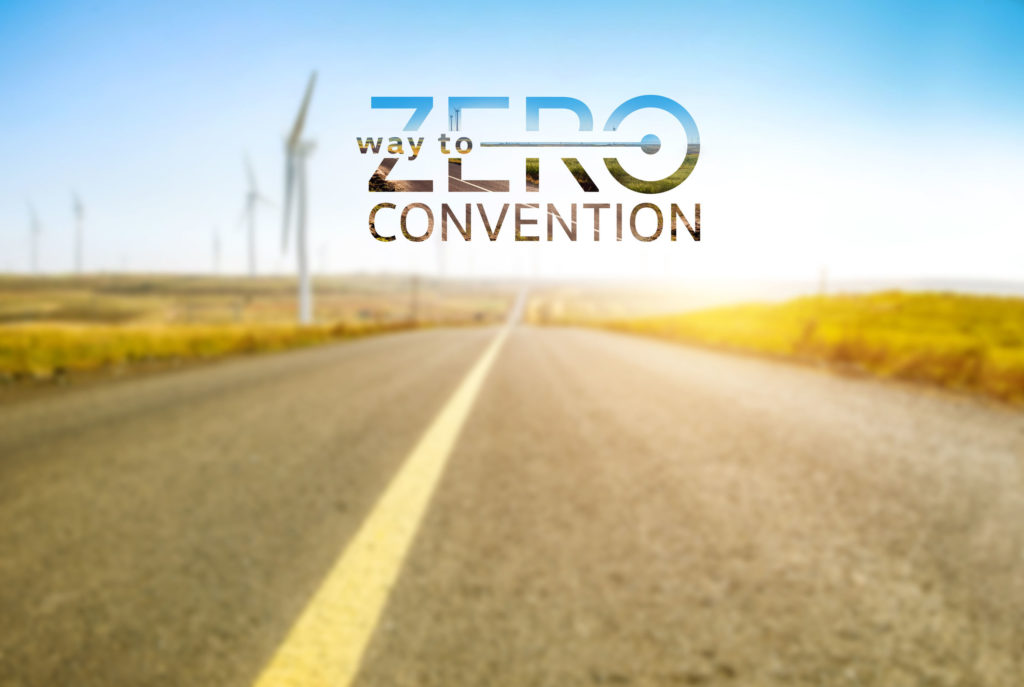
Who do you trust: Government? Science? Tesla?
Some institutions that were once commonly considered the bastions of trust and authority are currently being called into question. But trust in brands remains strong and steady.
• According to Pew Research Center, public trust in the government has been steadily declining since 1958, and it’s currently at an all-time low.
• The 2021 Edelman Trust Barometer found that trust in media is historically low across all information sources including search engines, traditional media and social platforms.
• Four automakers — Ford, Toyota, Tesla and BMW — were rated higher in trust level among consumers 18 or older at the same time faith in institutions plummeted.

Mistrust around the outcome of the 2020 election, mistrust in the police, mistrust of the vaccine– trust is on the forefront of our collective mind. Trust in traditional institutions is declining. But trust isn’t disappearing: brands are still trusted by the same consumers who question institutions.
As humans, we’re predisposed to trust. It’s the basis of our relationships. Without trust, we’re on our own. It’s what allows us to collaborate and exchange, to rely on our fellow citizens, specialists and organizations to get even the most basic things done. Trust is fundamental to our survival.
We trust that the organic produce is safe, instead of growing it ourselves. We trust our cars are made correctly by engineers instead of building them on our own. It begs the question– are brands the last place where we can all agree to put our trust?

Asking the question, who do you trust brings up wildly different answers. The variety stems from the fact that trust isn’t a rational decision. It’s rooted in what we believe. Belief is emotional and subjective, formed from your personal background, experiences, community and more. Objective facts aren’t enough to make you believe. But things that touch your feelings can earn trust fast.
Digital media is manipulating what people believe. While we are interpreting the things we see, hear and read according to our own personal experience, but we’re also now working from different information. There’s no longer a few trusted sources– social media has exploded the landscape. When you can find fact, opinion and fiction across your feed, it takes effort to thoroughly research what’s real and what’s not.
What you decide to believe from the cacophony of voices depends, for most of us, on our own biases. Researchers have studied our decision making processes, and we all have cognitive biases that influence how we choose who and what to trust. Here are just a few:
1. Default to Truth – The idea that our natural reaction to new information is to believe it. We innately want to trust– if we were sceptical of everything and everyone, we wouldn’t be able to live our lives.
2. Confirmation Bias – Confirmation bias, also known as myside bias, is the tendency to search for, interpret, favor, and recall information in a way that confirms or supports one’s prior beliefs or values. You’re more likely to believe something you already agree with.
3. False Consensus Effect – People tend to think that their own beliefs and actions are common, while other people’s behaviors are more deviant or uncommon, regardless of what “side” they’re on.
These biases long predate the digital era. But online communications and technology are magnifying them to an unprecedented degree.

We already have an innate tendency to favor information that supports our preconceptions and overestimate the commonality of our beliefs, but algorithms are changing the game. The algorithm shows you information that you’re more likely to be interested in based on your viewing history and the habits of your network.
While it’s an effective tool for engagement, algorithms exploit our confirmation bias and the false consensus effect.
• We’re not only cherry picking information that supports our beliefs– information we’re more likely to agree with is privileged in our search.
• We’re not just imagining consensus, but actually seeing more posts that agree with our views. No matter which side we take, we’re always right.
• It’s becoming increasingly difficult to change our beliefs, meaning trust is harder to earn.
On top of this, our pattern of defaulting to truth is becoming more and more complex. A recent 60 Minutes segment profiling the advancement of synthetic media makes this clear. So called “deep fakes” use machine learning technology to map the face of one person onto another. Combined with technology that recreates the speech patterns and tone of any human voice, the resulting videos are incredibly realistic. They show politicians and actors in places they’ve never been, speaking words they’ve never said. Ready to be spooked? Check out these viral videos of a deep fake Tom Cruise.

The level of trust we place in traditional institutions like the state, experts and the media varies widely across the population. On the whole, it’s waning. Is there anything we still have faith in?
Think about buying a Porsche. If you buy a Porsche, you trust that it’s worth the money. You know that Porsche makes a great car. You would not take your Porsche engine to a mechanic to get it verified, or interview the engineers and designers of the car to make sure it’s the real deal. You believe that Porsche will deliver on its promise. You trust the Porsche brand.
If we don’t believe a brand, we feel scammed. But when we do, something magic happens: we trust. Trust is the basis of the brand relationship and an incredibly powerful tool for building brand loyalty. Today, there are countless options for any sort of commodity or service we could desire. We’re always making choices of which brands we support. While price is certainly a factor, you might pay a little more for something from a brand you consider well-made, or ethical, or whatever else aligns with your beliefs. You choose the brand you trust.
Brands build trust through a combination of 3 major strategies.
1. Unity: Unlike the differing voices of news media and political factions, strong brands represent a united front. With a clear messaging strategy, brands state and reinforce who they are and what they stand for. But cohesive communications must be authentic in order to be believable.
2. Responsibility: In order to sustain belief and keep trust, brands must deliver on their promises. The brand voice is two sided– it’s made up of both what the brand says and what consumers say about it. The audience must be in agreement that the brand really lives up to their claims. Brands must continually prove their value by keeping their word.
3. Emotion: Trust isn’t wholly rational, it’s emotional. Brands play on our emotions to get us to believe. As we discussed in our previous six-part series on the Brand Feel Wheel, brands use emotional motivators to elevate our experience from a simple transaction to something much more memorable. By making us feel safe, free, excited, or any number of other emotions, they give us something that we’re seeking. It makes us believe in the power of the brand, building our trust by reliably provoking a desired response.
But trust is delicate, even for the most globally recognized brands. Let’s consider a brand that’s had some trust issues in the past. In 2015, Volkswagen was found to have been fudging numbers on the emissions tests and putting “clean” cars on the market that were not up to federal standards. It was a huge scandal for a car maker who had centered their brand on safety, presenting themselves as the most rigorously tested vehicle– the one you could trust. Many wondered if the brand could ever recover.
In 2021, the company revealed a major pivot: Volkswagen aims to be carbon neutral by 2050, with 50% of its offerings to be battery powered by 2030. They call this the “Way to Zero.”
The strategy takes sustainability, the very concept that broke trust in the brand in the past, and makes it the centerpiece of what Volkswagen is all about. It plays on all three major points of building brand trust: it’s a unified message, it contains a sense of responsibility and a clear promise, and it plays on our emotions, including our sense of ethics and fear of the future.
Will this strategy work? If Volkswagen can deliver on what they say, it just might. Only time will tell. But that’s the wonder of trust. It can be broken, but it can also be rebuilt.

We’re divided on almost everything these days. We can’t agree on if we should trust the institutions that used to make up the foundation of our society. We’ve all got our own information and sources. It’s getting harder to be sure what’s real.
But we still connect across brands.
We trust that Coca-Cola will taste the same every time. That Spotify will have all the music we want and that Amazon is the everything store. If we’re losing faith across sectors, it seems we’re not losing faith in brands. Trust is a strong bond, and one that should not be abused. Brands have power, which means they also have immense responsibilities.
But that’s just our opinion.

